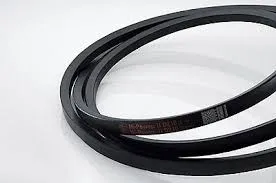- Arabic
- French
- Russian
- Spanish
- Portuguese
- Turkish
- Armenian
- English
- Albanian
- Amharic
- Azerbaijani
- Basque
- Belarusian
- Bengali
- Bosnian
- Bulgarian
- Catalan
- Cebuano
- Corsican
- Croatian
- Czech
- Danish
- Dutch
- Afrikaans
- Esperanto
- Estonian
- Finnish
- Frisian
- Galician
- Georgian
- German
- Greek
- Gujarati
- Haitian Creole
- hausa
- hawaiian
- Hebrew
- Hindi
- Miao
- Hungarian
- Icelandic
- igbo
- Indonesian
- irish
- Italian
- Japanese
- Javanese
- Kannada
- kazakh
- Khmer
- Rwandese
- Korean
- Kurdish
- Kyrgyz
- Lao
- Latin
- Latvian
- Lithuanian
- Luxembourgish
- Macedonian
- Malgashi
- Malay
- Malayalam
- Maltese
- Maori
- Marathi
- Mongolian
- Myanmar
- Nepali
- Norwegian
- Norwegian
- Occitan
- Pashto
- Persian
- Polish
- Punjabi
- Romanian
- Samoan
- Scottish Gaelic
- Serbian
- Sesotho
- Shona
- Sindhi
- Sinhala
- Slovak
- Slovenian
- Somali
- Sundanese
- Swahili
- Swedish
- Tagalog
- Tajik
- Tamil
- Tatar
- Telugu
- Thai
- Turkmen
- Ukrainian
- Urdu
- Uighur
- Uzbek
- Vietnamese
- Welsh
- Bantu
- Yiddish
- Yoruba
- Zulu
Août . 17, 2024 01:02 Back to list
Choosing the Right Lawn Mower Belts for Optimal Performance Maintenance
Understanding Lawn Mower Belts A Comprehensive Guide
Lawn mowers are essential tools for maintaining a well-groomed lawn, and like any machine, they require regular maintenance to function efficiently. One of the critical components of a lawn mower is the belt system, which plays a vital role in delivering power to the blades and ensuring the mower operates smoothly. This article provides an in-depth look at lawn mower belts, their types, maintenance, and replacement tips.
Types of Lawn Mower Belts
There are primarily two types of belts found in lawn mowers the drive belt and the blade belt.
1. Drive Belt This belt connects the engine to the mower's transmission or wheels, enabling the mower to move forward or backward. A well-functioning drive belt ensures your mower operates at the desired speed and responsiveness. If the drive belt is worn, cracked, or frayed, it can lead to power loss, making it difficult to drive the mower.
2. Blade Belt The blade belt is responsible for powering the cutting blades of the mower. When you engage the blades, this belt transfers energy from the engine to the blades, allowing them to spin and cut the grass. Like the drive belt, a damaged blade belt can impair the mower's cutting capability.
Signs of a Failing Belt
Recognizing the signs of a failing belt is crucial for maintaining your lawn mower and avoiding more significant issues down the line. Here are some common indications that your belts may need inspection or replacement
- Squeaking or Slipping If you notice unusual squeaking sounds when operating the mower or if the mower’s blades are not engaging properly, it might indicate that the belt is slipping or misaligned. - Visible Damage Regularly check for signs of fraying, cracking, or wear on the belts. Any visible damage should be addressed immediately to prevent further issues.
- Reduced Power If the mower is struggling to drive or if the blades do not seem to have the same cutting power as before, it may be due to a failing belt that can’t properly transfer energy.
lawn mower belts

Maintenance Tips
Proper maintenance of lawn mower belts can extend their lifespan and enhance the overall performance of your lawn mower. Here are some tips to ensure that your belts remain in top shape
1. Regular Inspections Regularly inspect the belts for signs of wear and tension. Checking them at the beginning of each mowing season can help catch issues before they become severe.
2. Keep it Clean Debris buildup on the belts can cause them to wear more quickly. Clean the belts and the pulley system regularly to eliminate grass clippings, dirt, and other debris.
3. Adjust Tension Ensuring that the belts are at the correct tension is vital. Belts that are too loose may slip, while those that are too tight can cause unnecessary strain on the engine.
4. Follow Manufacturer Guidelines Always refer to your lawn mower’s manual for specific instructions regarding belt maintenance and replacement. Some manufacturers provide detailed maintenance schedules, including when to replace belts.
Replacement Process
If a belt needs to be replaced, you can typically do this yourself with basic tools. First, unplug the mower or disconnect the battery. Then, remove the blade and any necessary covers to access the belt. Replace the damaged belt by following the manufacturer’s routing diagram. Finally, reassemble the mower and ensure everything is tightened and secure before testing.
Conclusion
Understanding the importance of lawn mower belts, recognizing the signs of wear, and following proper maintenance routines can significantly improve the longevity and performance of your lawn mower. Regular inspections and timely replacements will not only keep your mower running efficiently but also contribute to a well-tended lawn that you can be proud of. Whether you are a seasoned gardener or just starting, paying attention to these details will ensure that your lawn mower remains a reliable companion in your lawn care endeavors.
-
Korean Auto Parts Timing Belt 24312-37500 For Hyundai/Kia
NewsMar.07,2025
-
7PK2300 90916-T2024 RIBBED BELT POLY V BELT PK BELT
NewsMar.07,2025
-
Chinese Auto Belt Factory 310-2M-22 For BMW/Mercedes-Benz
NewsMar.07,2025
-
Chinese Auto Belt Factory 310-2M-22 For BMW/Mercedes-Benz
NewsMar.07,2025
-
90916-02660 PK Belt 6PK1680 For Toyota
NewsMar.07,2025
-
drive belt serpentine belt
NewsMar.07,2025

